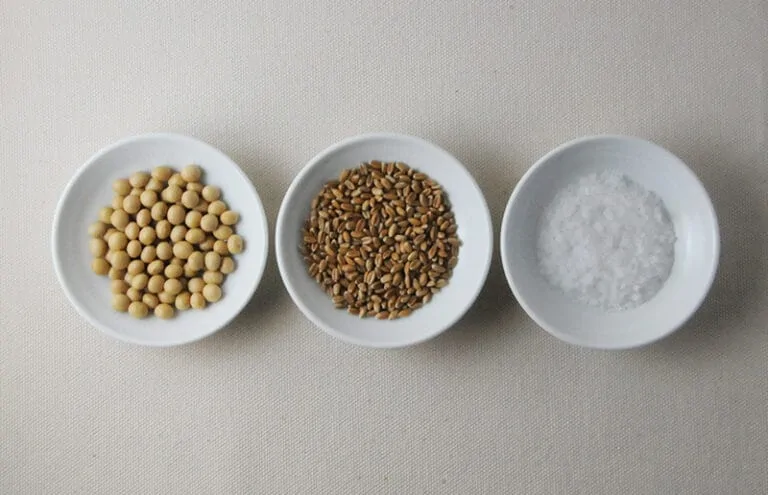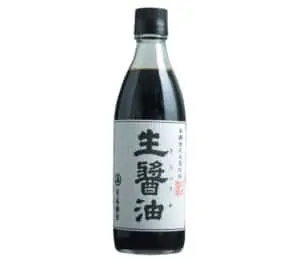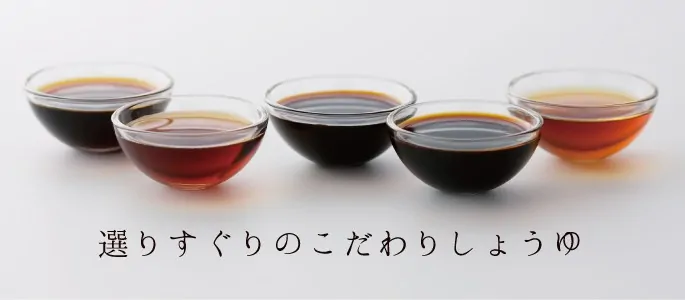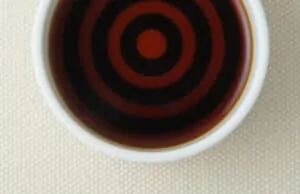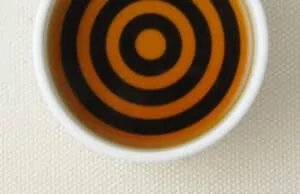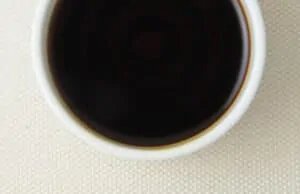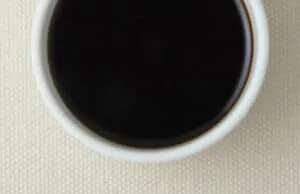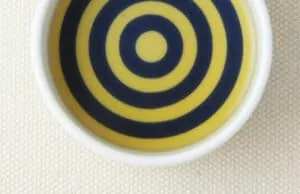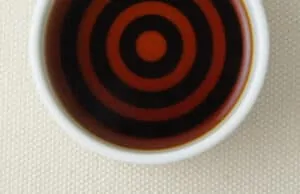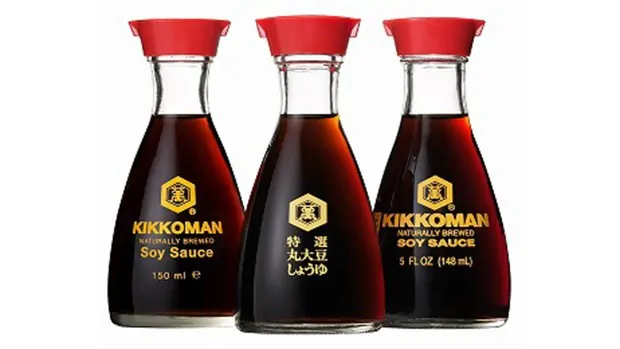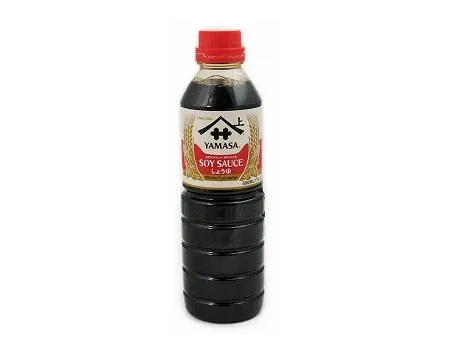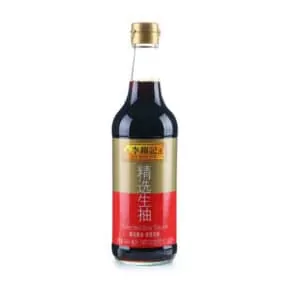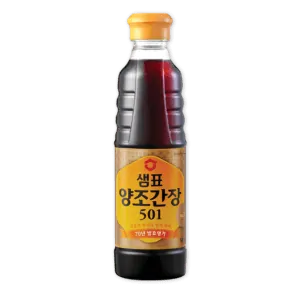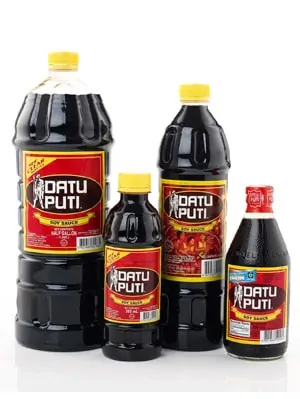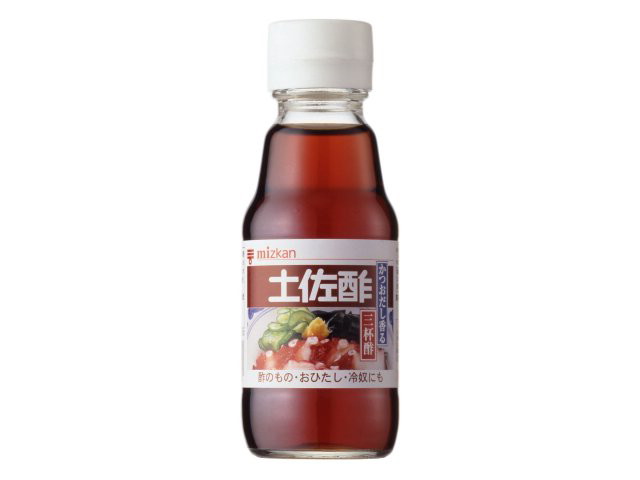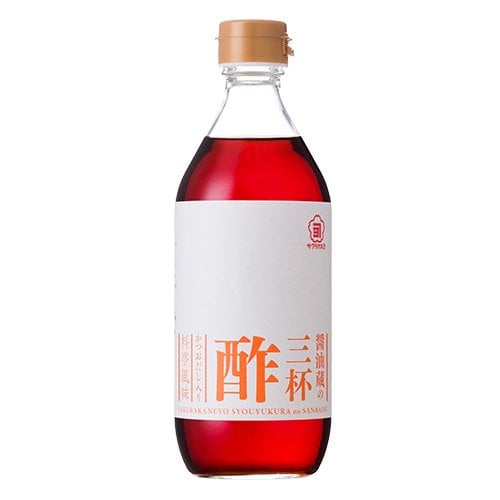
What is shoyu?
Shoyu (醬油) is the Japanese word for soy sauce. It should technically be written as “shouyu” or “shōyu” but I guess marketers felt that was a confusing way to spell it. Shoyu is one of the most essential ingredients for Japanese flavour, and is used in seemingly 90% of dishes. It adds saltiness, as well as umami to your dishes.
If you’re like me, you have many questions about soy sauce / shoyu:
- What is shoyu made of?
- Why is it black?
- What’s the difference between light/dark, Japanese/Chinese/Korean, and all these other types of soy sauce?
- Does soy sauce expire? Do you need to refrigerate soy sauce???
In this article, we will answer these questions and more, as we learn all about Japanese soy sauce — shoyu.
A super brief history of shoyu
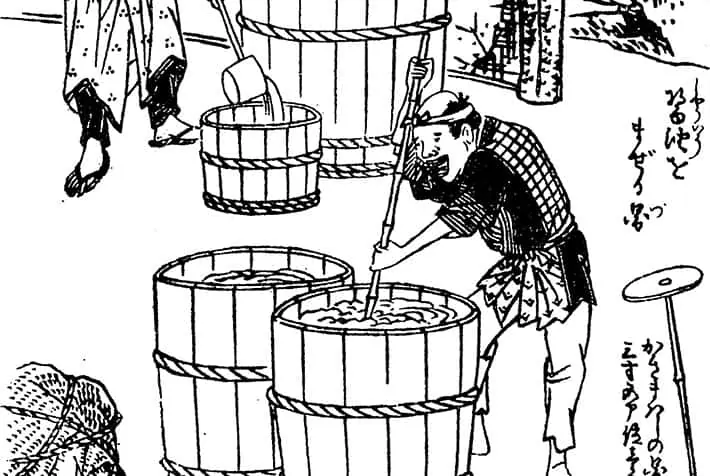
Let’s first take a very brief look at the history of soy sauce in Japan.
The predecessor to what we know as “soy sauce” originated in China, and was actually made with fermented meat or fish/seafood products. Eventually, all meat/seafood products were replaced with soy beans and grains as they were cheaper and more plentiful. Buddhism was also growing in popularity at the time, and Buddhists were all vegetarians. The seafood and meat variations eventually became other types of sauce like fish sauce.
The original soy sauce “recipe” was eventually brought to Japan from China by a travelling Japanese Buddhist monk sometime in the 7th century (i.e. over 1000 years ago!).
Over time, the Japanese adapted the original recipe and production process to their own taste and local ingredients. For example, more wheat was used as it made the sauce more fragrant. By the 17th century (i.e. almost 500 years ago), the current process of making Japanese soy sauce was established.
This basic process is still used today (with a few technological upgrades, of course). Let’s see exactly what this process is.
How shoyu is made / What shoyu is made of
Japanese soy sauce is made of four main ingredients — soy beans, wheat, water, and salt. The production process involves double fermentation, and is sort of similar to making beer. There are a lot of small details that go into making soy sauce, but below is a basic five step overview of the entire process.
Step 1: Raw ingredients are prepared
First, the soy beans are steamed, and the wheat is roasted and crushed. The two are then mixed together.
Step 2: Koji mold added to create “soy sauce koji”
Koji mold (i.e. koji starter / koji seed) is then spread on top of the the soy beans/wheat, and mixed together. You can think can think of koji mold as sort of like a yeast. The mixture of koji mold, soy beans, and wheat, is then placed into a temperature controlled, hot/humid room (from 30 to 35°C) and allowed to ferment for around three days. The humid environment allows the mold to grow, spread, and cover the entire mixture.
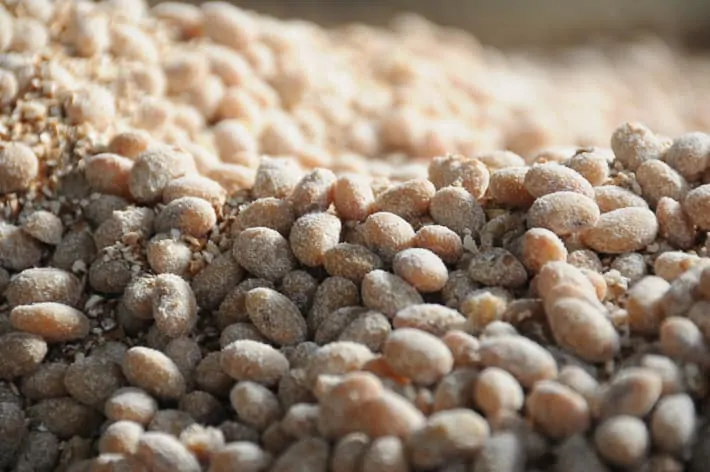
The purpose of this step is to create enzymes. As the mold grows, it also produces enzymes which are key to helping break down soybean protein into its amino acids, and wheat starch into glucose. The soybean amino acid and wheat glucose is what gives soy sauce its unique taste (umami) and fragrant smell. Many producers consider this the most important step of the shoyu making process.
After three days, the completed soybean/wheat/koji mold mixture is known as “shoyu koji” (i.e. soy sauce koji).
Fun fact: Koji mold is also used in production of miso, mirin and sake!
Step 3: Shoyu koji mixed with salt water
The shoyu koji from Step 2 is then mixed with salt water and placed into barrels for further fermentation. The resulting muddy, miso like mixture created is called “moromi” (諸味). Fermentation time depends on various factors, but is usually around 6 months in a temperature controlled environment.
Some more traditionally made, or higher-end “craft” soy sauce are aged for 1 to 3 years! The moromi is also stirred periodically to introduce air into the mixture, and help with the fermentation process.
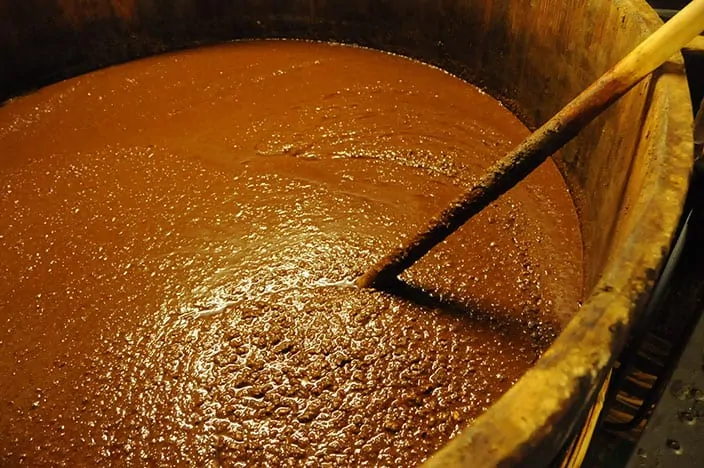
During this step, the enzymes created from the shoyu koji break down the soybean protein and wheat starch to produce that unique soy sauce flavour. The salt water helps protect against, and kill any bacteria that may enter the mixture.
This step is also when the unique brown colour of soy sauce is produced. Basically, the longer the fermentation time, the darker the colour.
Traditionally, wooden barrels were used to store the moromi. Nowadays, most mass produced soy sauce is fermented in temperature controlled metal tanks which can speed up the process, and also produce more consistent quality.
Step 4: Raw soy sauce
After fermentation is complete, the moromi mixture is collected and squeezed through a cloth filter (sort of like a giant cheese cloth). The liquid that seeps out is soy sauce!
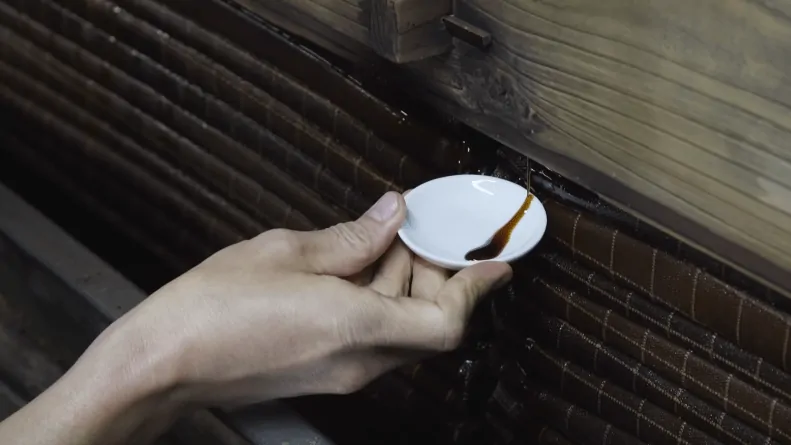
This is actually known as “raw soy sauce” (生醤油). See the next section for more info about raw soy sauce.
Step 5: Heat treated and bottled
The raw soy sauce is then usually filtered and heat treated (pasteurized) to kill any microorganisms that are still active. If not filtered and/or pasteurized, the remaining microorganisms will continue to ferment the soy sauce, causing the taste to change and deteriorate over time. Sometimes other preservatives are also added to the raw soy sauce in order extend shelf life.
The soy sauce is then bottled, labelled and sold to you!
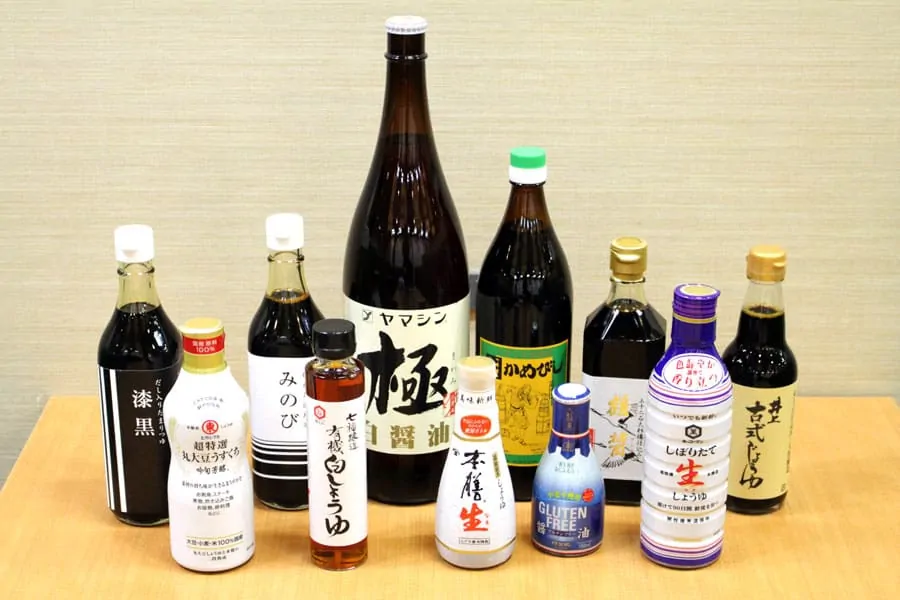
That’s it! Of course, there are a lot more details that goes into making soy sauce (ratio of ingredients, type of salt, etc.) but that is the basic process. You can actually make your own soy sauce at home if you have the material and time. Maybe I’ll try one day.
About Raw Soy Sauce (生醤油)
There are a few variations of “raw” soy sauce to understand — kiage shoyu, na-me shoyu, and ki shoyu. They are all written using the same kanji (生醤油), so it may be confusing.
Ki-age shoyu きあげ醤油
Soy sauce that is freshly squeezed from the maromi (i.e. step 4 from above), and not filtered or heat treated is known as “kiage shoyu” (き揚げ醬油). It is difficult to buy this variation unless you go straight to the factory/production warehouse. This soy sauce needs to be stored in the refrigerator and consumed quickly as micro organisms are still active which will continue to ferment and deteriorate the taste quicker than normal.
Nama shoyu なま醤油
“Nama shoyu” (なま醤油) is filtered, but not heat treated to remove microorganisms. As a result of not being heat treated, this version of soy sauce has milder taste and smell. When cooking, it will be much more fragrant than soy sauce that has already been heat treated.
Ki shoyu き醤油
The last type of raw soy sauce is “ki shoyu” (きしょうゆ). It is actually filtered and heat treated like normal soy sauce. It is called “raw” for marketing purposes, because no other materials are added other than the essential soy beans, wheat, and salt, and water.
Types of Shoyu
In Japan, there is an official government standard for soy sauce. According to the JAS (Japanese Agricultural Standards), there are five official types of soy sauce — dark soy sauce, light soy sauce, double-brewed soy sauce, tamari soy sauce, and white soy sauce.
There is also an extra category that many experts like to add — sweet soy sauce.
The difference between each type generally has to do with the ratio of soy beans to wheat used. Some regions of Japan also favour certain types of soy sauce over others. Let’s take a closer look at each of these six types.
Dark soy sauce / 濃口醤油 (koikuchi shoyu)
Dark soy sauce (or koikuchi shoyu) is the most common type of soy sauce found in Japan, and the type you are probably most familiar with. It is sometimes labelled as “regular” soy sauce. In fact, around 80% of all soy sauce found in Japan is considered as dark soy sauce. It is most popular in Eastern Japan (i.e. Tokyo and surrounding areas).
It is the most versatile type of shoyu, as it can be used for all types of cooking, marinades, and for directly dipping or topping your foods.
The ratio of soy beans to wheat used to make koikuchi soy sauce is about 1:1.
If you’re not sure which soy sauce to buy, just get Japanese dark soy sauce, and you should be safe.
Light soy sauce / 淡口醤油 (usukuchi shoyu)
Light soy sauce is lighter in colour than dark soy sauce, but higher in salt content. The distinct soy sauce “taste” is less prominent when compared to dark soy sauce. It is most often used to cook dishes which want to showcase the natural colours and flavors of the ingredients without an overpowering taste of soy sauce.
It is most popular in Western Japanese cuisine (i.e. Kyoto area).
The ratio of soy bean to wheat is actually the same as dark soy sauce (1:1). The lighter colour is a result of a different fermentation process. Mainly, the fermentation time is reduced, and the temperature is also lowered. There is also less stirring, and thus less contact with air (oxidization), which further helps create the lighter colour.
Use light soy sauce in your cooking when you want the natural colours of your ingredients to stand out. Just remember that it has higher salt content, so you can reduce or remove any additional salt added.
Double-brewed soy sauce / 再仕込醤油 (saishikomi shoyu)
Saishikomi shoyu is soy sauce that is brewed twice. The process of making saishikomi shouyu is the same process as normal, but instead of using salt water to make the maromi (i.e. step 3), soy sauce is used!
Therefore, the process basically involves making soy sauce twice, and requires double the amount of soybeans/wheat as normal, as well as twice as much time (2-3 years).
The result of the double brewing process is a much darker, thicker, and stronger flavoured soy sauce. Perhaps surprisingly, double-brewed soy sauce is actually less salty than dark regular soy sauce.
It is most often used as a dipping sauce for sashimi and various meat dishes. You can also use it on top of ice cream topping for a uniquely delicious, salty-sweet combination.
Saishikomi shoyu is said to originate form the Yamaguchi prefecture.
Tamari Soy Sauce / 溜醤油 (tame shoyu)
Tamari soy sauce is for all the gluten free people out there. It uses no wheat (or very little), and a lot of soy beans. As a result, it has the most “umami” of all the soy sauce types. Less water is also added, which gives tamari soy sauce a much richer/concentrated taste. It is also the darkest color of all the soy sauce types.
It can be used the same way as regular soy sauce, and is recommended for making teriyaki sauce as it gives it a nice shine.
Tamari soy sauce is mainly produced in the Chubu region (central Japan). Due to its gluten-free status, tamari soy sauce has recently become very popular in Western countries.
White Soy Sauce / 白醤油 (shiro shouyu)
White soy sauce (i.e. shiro shoyu) is the least well known of all soy sauce types. Unlike tamari soy sauce, white soy sauce is made mostly of wheat. It is made of about 90% wheat and 10% soy beans.
The production process also differs from regular soy sauce. The soy beans are roasted and wheat is steamed (opposite of regular). The total production time is also only about 3 months, much shorter than normal. White soy sauce is also not heat treated, so it has a shorter shelf life than regular soy sauce.
The use of wheat as the main ingredients gives white soy sauce a unique golden colour. It also makes it sweeter than regular soy sauce (16% sugar content), and more fragrant.
Despite it’s colour, white soy sauce actually has a higher salt content than dark/regular soy sauce (18% compared to 16%). Therefore, be careful not to use too much when you’re cooking, as the saltiness may overpower other tastes.
White soy sauce is very useful for making dishes where you don’t want the colour, scent, or distinct umami taste of soy sauce to overpower the other ingredients. In Japan, it is mainly used for various soups, hot pots, and egg dishes.
Originally, white soy sauce was mainly used for commercial purposes, but has become more popular with Japanese home consumers in recent years. It is mainly produced in the Aichi area of Japan.
Sweet Soy Sauce / 甘口醤油 (amakuchi shoyu)
Sweet soy sauce, or amakuchi shoyu, is the most popular type of soy sauce in the Kyushu region of Japan (southern most area of the mainland). Sweet soy sauce is not an official category by the JAS, but is actually considered a segment of dark soy sauce.
In Kyushu, sweet soy sauce is so popular that it is actually rarer to find non-sweet soy sauce when you are in the region.
Why is it so popular? There are many theories. Kyushu is most famous for its sweet foods, so perhaps people there just have a sweet tooth, and prefer sweet soy sauce. Each area within Kyushu also prefers varying levels of sweetness, so it is interesting to see the difference when travelling around. It is said that the closer you get to the sea, the sweeter the soy sauce becomes.
Sweet shoyu is made by simply adding sweetener to the brewing process. The type of sweetener and level of sweetness depends on each company.
Other types of shoyu
The above six are the main types of Japanese soy sauce you will find. Each type can then be further categorized by grade/quality (normal, premium, super premium), production/brewing method, soybean type, reduced salt versions, and many other variations. There are even some flavoured soy sauces available (caramel soy sauce anyone?).
Japanese soy sauce brands
The soy sauce industry in Japan is HUGE (about 750,000 kl shipped in 2018). There are actually over 1000 soy sauce producers in Japan, but the market is dominated by a few major brands. In fact, just six companies make up over 50% of the market. Recently, there are fewer and fewer small companies producing soy sauce as prices have been driven down, making it harder for them to survive. If you are in Japan, there are many craft soy sauce brands available, but internationally you will be probably be limited to a few of the largest brands.
Kikkoman(キッコーマン)
Kikkoman is the largest, and most well known shoyu brand inside and outside of Japan. Alone, they make up over 25% of the Japanese soy sauce market. If you have ever been to a Japanese restaurant, you probably recognize their iconic soy sauce bottle (pictured above).
Yamasa (ヤマサ)
Yamasa is the defacto number two Japanese soy sauce brand. They make up just over 10% of the soy sauce market in Japan. Although not as internationally recognized as Kikkoman, you can easily find Yamasa products in major supermarkets around the world.
Marukin (マルキン)
Marukin is a smaller brand that only makes up about 4% of the Japanese shoyu market. Marukin is unique in that they still use wooden tubs to produce/ferment its soy sauce. This is in stark contrast to most big brands which use modern, metal tanks. In fact, the 100+ year old Marukin brewery is the largest natural soy sauce brewery in Japan and has over 300 wooden tubs to brew its soy sauce. The Marukin brand is owned by a parent company called Morita.
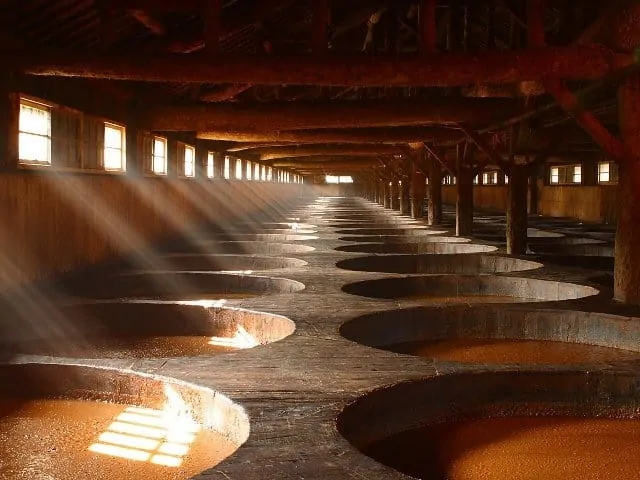
The remaining brands that make up the top six companies are Shoda, Higeta, Higashimaru. Shoda is actually the third largest producer at about 6.5% of the market. They are well known within Japan, but may be a bit more difficult to find internationally.
Shoyu vs. other countries soy sauce
If you ever go to the supermarket, you will see there are a ton of different soy sauce options from different countries — Chinese, Korean, Thai, etc. What is the difference between all of these? Can you simply replace one with the other? Not quite. Let’s take a closer look.
Japanese soy sauce vs Chinese soy sauce (i.e. jiangyou)
Besides Japanese soy sauce, the most readily available type would probably be Chinese soy sauce. Japanese shoyu actually originated from Chinese soy sauce, but over time the tastes changed.
Chinese soy sauce uses less wheat and more soy beans in their brewing process. They also usually use wheat flour as opposed to toasted wheat. There are also various types of Chinese soy sauce to be aware of, but the main two are “light” and “dark”.
“Light” Chinese soy sauce (生抽) is actually the regular / all-purpose version, and is sort of equivalent to Japanese “dark” soy sauce. Yes, it’s confusing.
“Dark” Chinese soy sauce (老抽) is a darker, thicker variation that is actually sweeter and less salty than “light” Chinese soy sauce. It is most often used to add more colour to a dish. It is actually made using “light” soy sauce, so it is sort of comparable to the Japanese double-brewed soy sauce (saishikomi shoyu).
So, if for whatever reason you can only purchase Chinese soy sauce, then you should get Chinese “light” soy sauce (生抽) for your day-to-day, all-purpose needs.
Japanese soy sauce vs Korean soy sauce (i.e. ganjang)
Korean soy sauce (“ganjang”) is probably the next most common soy sauce available after Japanese and Chinese. Again, there are many various types of ganjang, but the most similar (basically identical) to Japanese dark/regular soy sauce is called “yangjo ganjang” (양조간장).
There is another type called “guk-ganjang” — also known as “hansik-ganjang” or “jip-ganjang”. I don’t know why it has so many different names. This is a traditional Korean soy sauce that is saltier and contains no wheat. There are also many “blended” or artificially brewed soy sauces that you should try to avoid.
The most famous Korean brands are Sempio and Chung Jung One.
Soy sauce from other countries
There are a ton of other soy sauce types you may come across including Filipino, Indonesian, Malaysian, Singaporean, Thai, Vietnamese, Taiwanese, and more. They are all a bit similar, but slightly different at the same time which can make choosing a soy sauce very confusing. I don’t want to get into all the difference right now, but perhaps in a later update.
For authentic Japanese cooking, it is recommended to use Japanese shoyu. If you can not find any, the next best choice is Korean “yangjo ganjang”. After that, you may try Filipino “toyo” soy sauce which is also very similar to Japanese shoyu. If none of those are available, then try Chinese “light” soy sauce (生抽).
Of course, you can try to substitute with others. The resulting flavours will change, but I’m sure it will taste fine … maybe even better! It’s always best to experiment, and see which you like best.
Other interesting notes
Here are some other random notes, facts, and common questions about Japanese shoyu, and soy sauce in general.
Does soy sauce expire?
This is a very common question that has probably crossed your mind at some point. It seems like you can leave a bottle of soy sauce for years, and still use it. So, does soy sauce actually expire? Yes. It does.
Over time, the taste and colour of soy sauce will change. So, although you can still eat it (and not die or get sick), it is recommended to consume before expiration for optimal taste.
How long does soy sauce last?
The shelf life depends on the type soy sauce, as well as the type of container it is packaged in. Soy sauce packaged in plastic (PET) bottles have a slightly shorter shelf life. Glass bottled, or canned soy sauce (usually only restaurants who buy in bulk get cans) will last a bit longer.
White soy sauce expires the quickest, as it is not heat treated before being bottled. It is usually has a shelf life of about 8 months.
Light soy sauce is next fastest to expire, as the colour will get darker over time. Since there are regulations as to what colour constitutes “light” soy sauce, a shorter expiration date is used. Colour will darken faster when exposed to sunlight and heat, so make sure to keep your light soy sauce in a cool, dry place. The shelf life for light soy sauce is around 12-18 months.
Dark soy sauce (and other types) have a shelf life of about 18-24 months.
Note that this is SHELF LIFE — i.e. expiration before opening the bottle. After you open your bottle of soy sauce, it is actually recommended to consume within around 1-2 months. To maintain optimal taste, you also need to store it properly. Read on!
How to store soy sauce? Do you need to refrigerate soy sauce?
After opening, the best way to store your soy sauce is in the fridge. Many people seem averse to this idea, and think that there is absolutely no point refrigerating soy sauce. Well, actually there is!
So, why do you need to refrigerate your soy sauce? There are three main factors that cause soy sauce to oxidize, which will darken the colour and diminish its taste — sunlight, heat, and air. By keeping your soy sauce in the fridge, you protect it from 2/3 of the factors (sunlight and heat).
There is not much you can do about some air entering the bottle after opening, so just remember to close the lid when you’re finished using it. There are actually some newer bottles that prevent air from entering the bottle, and only let the liquid out if squeezed (sort of like those sports drink water bottles).
If you buy a soy sauce with tons of preservatives added, then perhaps there is no point in keeping it in the fridge. But, if you get some naturally brewed Japanese shoyu, then I recommend to refrigerate it.
Why does some soy sauce have alcohol in it?
If you look closely at the ingredients label of certain soy sauces, you will notice that alcohol is added. In most cases, the alcohol’s purpose is to prevent a certain type of white mold from forming in the bottle. Although the mold is harmless to the human body, it ruins the taste and smell of the soy sauce.
Some types of soy sauce (e.g. light shoyu) will simply increase the amount of salt instead of adding alcohol to prevent mold formation.
Alcohol also helps carry the fragrance of soy sauce when it evaporates into the air. Some manufacturers do use alcohol as a cheap way to cover up for lack of umami content, so make sure you purchase from a reputable brand.
Random interesting facts about shoyu / soy sauce
- Annually in Japan, roughly 1.25 million MT (i.e. 1,250,000,000,000 tonnes) of soy sauce are produced. This requires 170,000 to 180,000 MT of defatted soybeans and wheat. Five firms account for 50% of total production.
- Each Japanese citizen consumes a daily average of about 30 g of soy sauce.
- Soy sauce is the third most popular condiment in the United States, trailing only ketchup, and the mighty mayonnaise.
- Soy sauce used to be more of a luxury product due to the long, tedious and thorough production process. After technology and mass produced soy sauce was invented, soy sauce became a very cheap commodity available to everyone.
Conclusion
Damn, that’s a lot of information about soy sauce!
In this article, we learned exactly what is shoyu, how it’s made, and the six main types available. We also learned that soy sauce does in fact “expire”, and you should refrigerate it after opening.
We also looked at some famous Japanese soy sauce brands, as well as how different countries soy sauce compare to Japanese shoyu.
I hope that this article was useful and informative to you. What is your favourite soy sauce? Let me know in the comments!
Make sure to check out the article on other essential Japanese seasoning ingredients.
What is shoyu used in? Check out some easy recipes including teriyaki chicken, and yakimishi (i.e. Japanese fried rice).
Sources:
- https://www.s-shoyu.com
- https://ja.wikipedia.org/wiki/日本の醤油メーカー
- https://www.sciencedirect.com/topics/agricultural-and-biological-sciences/soy-sauce
- https://futuredish.com/korean-soy-sauce-which-one-do-i-buy/
Subscribe for free today! Receive cool recipes, my latest Japanese knife picks and learn about Japanese culture. Delivered every other week to your inbox.
